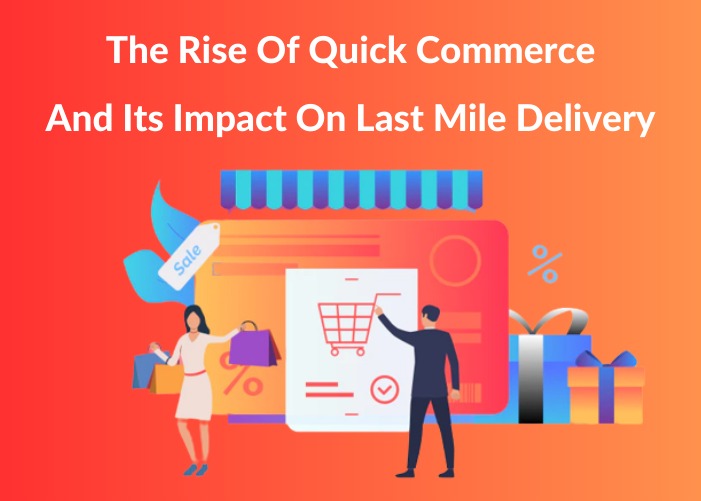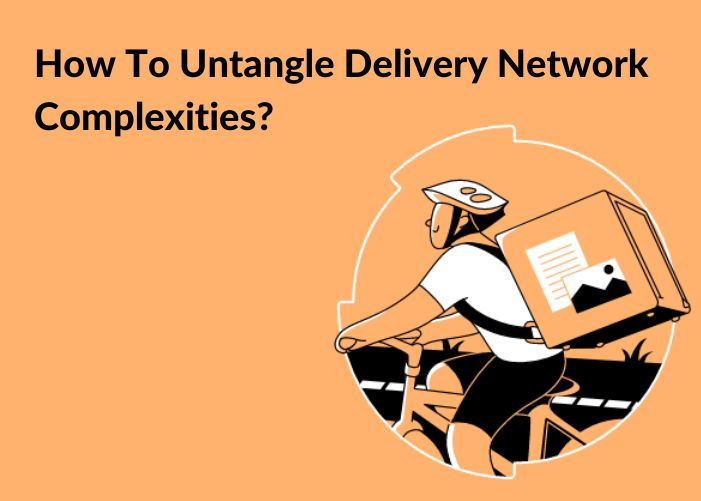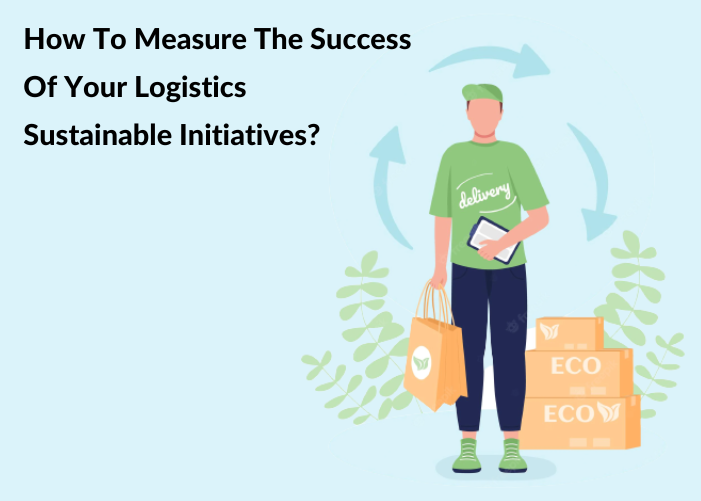1) Quick-commerce: Its rise and the last-mile challenges that it creates
Well, the onset of “Quick Commerce” (Q-commerce) has brought about huge benefits for all involved – consumers, brands, and retailers. However, to ensure that it keeps delivering on its potential – and, consistently at that – it must be planned and executed properly. Challenges exist aplenty, from the products that are made available right through to the time and cost of their delivery.
This article will focus on the impact of Q-commerce on last-mile delivery, the challenges it creates, and how to overcome them.
2) Analyze your product portfolio carefully
Well, the goods and products that you offer as a Q-commerce platform or retailer determine your success in more ways than one. Therefore, be sure to identify your product portfolio carefully.
Medicines, grocery items, cosmetics, toiletries, and other such small-sized products work well because not only are they items that people want as part of their daily routines (convenience), but also because they can be delivered quickly (e.g. by using a bike or a 3-wheeler van).
Bulky items – sofa, large refrigerator – will not fit the bill. By a general rule, anything that needs an installation, or a particular delivery schedule should not be offered on a Q-commerce platform. Products that are light can be transported quickly, or are often ordered “urgently” or as an “emergency” are what you need to impanel.
Remember, your competition is adhering to such best practices and if you want to stay competitive, you’ll want to as well!
2) Speed of order-fulfillment
Extending the point above on speed of delivery, you need to understand how your last-mile delivery is set up i.e. the distance across which the product will travel for the final leg of its journey that ends at the customer’s doorstep. Probably, the most critical element is the location of your warehouse network and local distribution centers. You will want these as close to your customers as possible to ensure speedy delivery.
~~ The right Last-Mile Delivery Software will create synergy between Q-commerce teams, provide end-2-end visibility, and maintain insightful metrics for ROI. Importantly, you can utilize it to galvanize your Customer Experience ~~
Further, analyze the type of vehicles required to transport your orders. Do you really need a large fleet comprising of large vans or trucks? The use of bikes, mini-vans, or even bicycles should do the job nicely.
Smaller, lighter vehicles will enable you to expedite orders by negotiating traffic better, and keep costs low – and, if you use electric cars it will also make you responsible from the sustainability perspective. Keep such points in mind while selecting your 3PLs and logistics partners.
3) The magic of modern technology
Well, we live in times where technology drives everything! It creates new markets for new products, and provides access to new markets for existing products…well, the list is endless!
Therefore, to state the obvious: regardless of the product type, location of service, fleet type, company size, growth (etc.) unless the technology deployed is cutting-edge, you will be unable to exploit the opportunity presented by the fast, hyper-local world of Q-commerce.
As mentioned above, Q-commerce relies on several internal systems all communicating with each other in real time. Inventory accuracy, operational metrics, availability of delivery resources, and many such in a long list of elements along the supply chain so that all stakeholders are live and the exchange of information is in real-time. Without that, a Q-commerce business will come unstuck.
For example, your order-management tool i.e. an inventory management system that gives you a single, holistic view of inventory becomes absolutely non-negotiable. It also offers other benefits like agility in tweaking/changing your product portfolio lineup based on demand, and staying flexible across your pickup and delivery logistics.
Without it, you cannot correctly present your product portfolio to your customer, and run the risk of stock-outs, irate customers, and a negative shopping experience.
4) Q-Commerce: not without challenges
Quite obviously, all new opportunities of such scale have their challenges.
It isn’t exactly cheap to offer hyper-fast delivery (e.g. “30-minute groceries) or maintain hyper-local inventory across an elaborate network of warehouses. Think about the level of inventory required – multiple SKUs, brands, price points within categories (etc.). Since “convenience” and “speed of delivery” is the cornerstone of Q-commerce, stock-outs, and insufficient inventory will become hugely counter-productive.
~~ With Q-commerce, the bottom-line is, well, the bottom line! That is, how profitable will such ventures ultimately be? ~~
Oh, and with regards to last mile delivery, the offer for “free delivery” is something that customers now (almost) takes for granted! This begs the question on the flipside: will you be able to retain customers if you stopped offering free delivery?
By logical extension, if you started charging a delivery fee, how much do you peg it at? Can you match the fee that your competitors are offering? If not, why not? Are your cost structures set up incorrectly, then? If they can do it why can’t you? Will it come with a scale? Will you be able to sustain your operations till you achieve such scale? These are core questions that you must take a good, hard look at.
Selecting the right technology and platform could (potentially) lower the time and cost to equilibrium. Automation, real-time data, and cross-functional optimization are just some elements you must be obsessed with in order to achieve sustainable unit economics and profitability.
5) Company Alignment
An underlying truth across all the individual points above repeatedly indicates a critical element for success i.e. a siloed approach won’t cut it.
The entire organization and its numerous functions must be aligned internally. Additionally, it must also be aligned with external stakeholders like the supply-chain entities, logistics partners, and of course, the end customer.
Without a cross-functional synergy, an operation like Q-commerce – with its fine margins, tight timelines, hyper-markets, and frenetic activity – will come to a disastrous end. And remember, today’s customers are demanding – pampered? – lot! They will simply move on to your competitor…
Conclusion: As is evident, while Q-commerce offers several benefits to consumers, e-commerce ventures, and brands, it also brings numerous challenges. A significant part of these challenges is centered within the last-mile segment and therefore, using modern, automated, and cutting-edge delivery software is a must-have weapon in your armory.




